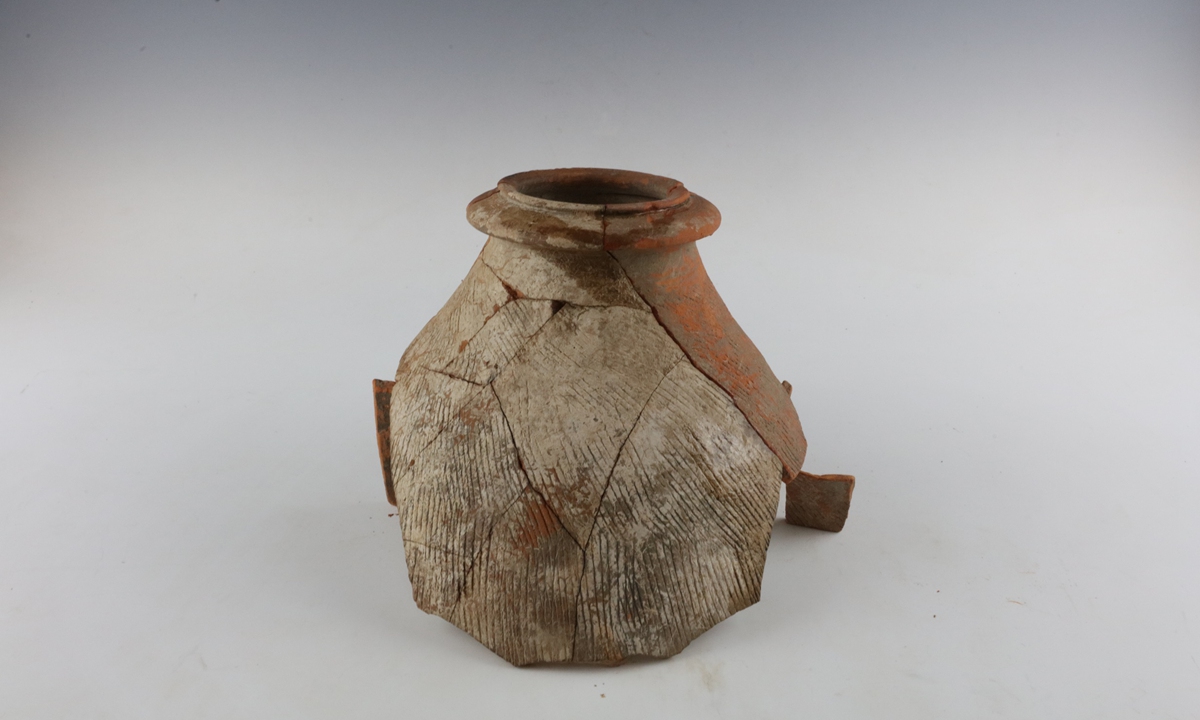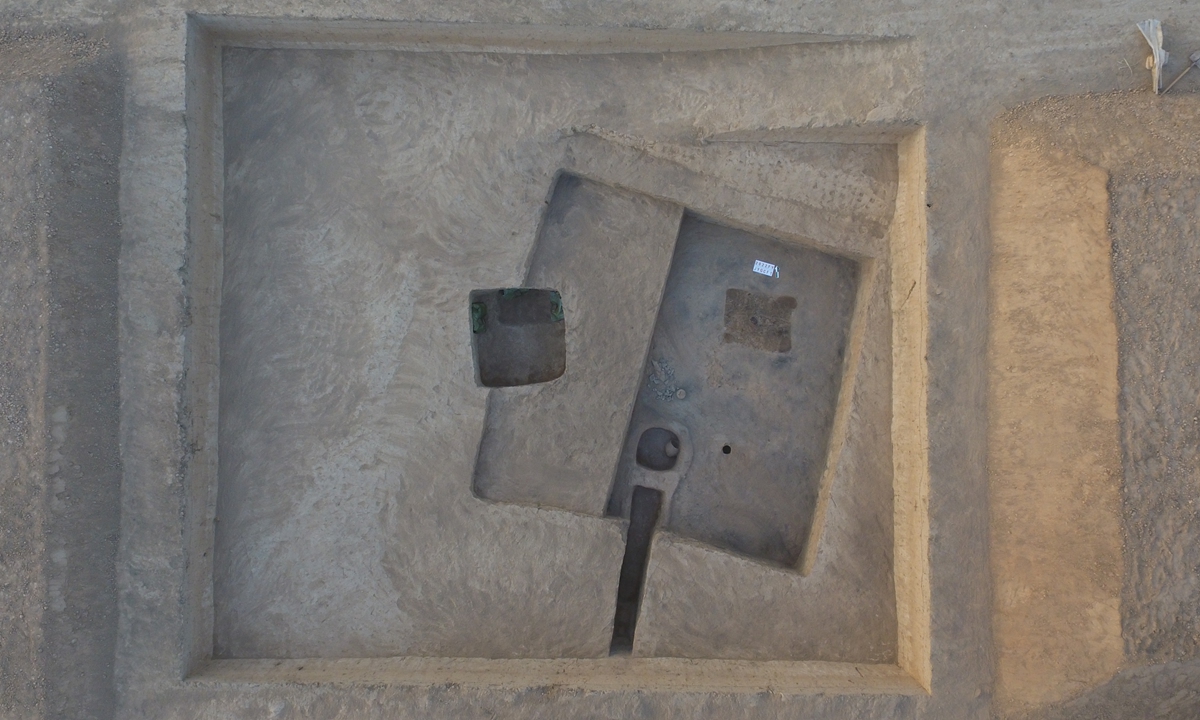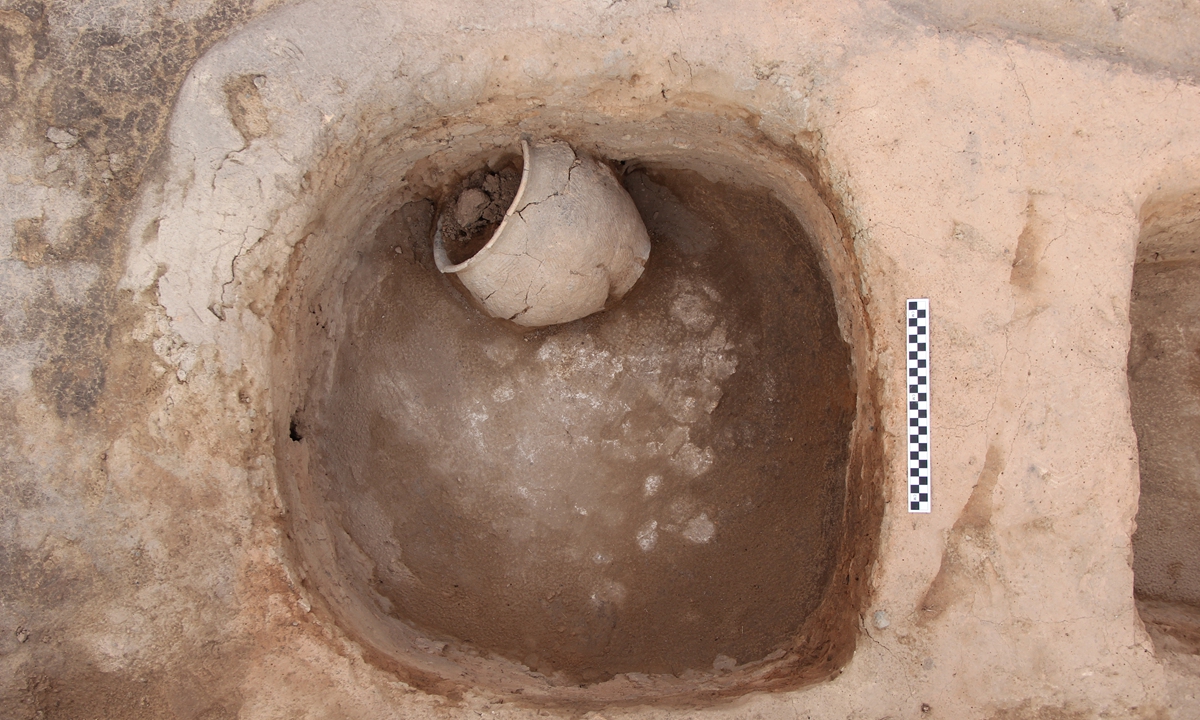
Some of the new discoveries found at the Neolithic ruins in a village in Fenyang, North China's Shanxi Province Photo: Courtesy of Shanxi Academy of Archaeology
The latest archaeological discoveries in North China's Shanxi Province were announced on Monday. The discoveries, which include several ruins belonging to the Neolithic Yangshao Culture, are seen as valuable materials for research into the origin and evolution of Chinese civilization.
Archaeologists in Shanxi found Neolithic ruins in a village in Fenyang which date back to around 5,500 years ago. The ruins of two homes excavated at the dig site were confirmed to have been built during the middle period of the Yangshao Culture, a Neolithic culture that existed extensively along the middle reaches of the Yellow River in China from 5000BC to 3000BC. The two homes are the most complete examples of their kind found in the province over the past few years, researchers at the Shanxi Academy of Archaeology told the Global Times on Tuesday.
The remains of the two buildings were each more than 30 square meters in size, while their floors, which would have been hard and flat, were made from a mix of mud and grass.
A variety of relics were found within the two buildings, including a fragment of gray pottery, a grindstone and painted pottery pots. These cultural relics all date back to roughly the same stage of the Yangshao Culture.

Some of the new discoveries found at the Neolithic ruins in a village in Fenyang, North China's Shanxi Province Photo: Courtesy of Shanxi Academy of Archaeology
The complete remains are of great significance to study the structure, layout, construction and function of houses at that time, and also provide important materials for further research into the population, social structure, productivity level and natural environmental changes at that time, according to researchers.
Besides the remains in Fenyang, another significant Neolithic archaeological discovery was in Yuncheng, another city in Shanxi Province. The ruins were close to a salt lake during the Neolithic period. Researchers speculate that access to massive salt resources was closely tied to the formation and development of the site, which holds great value for exploring the origin of Chinese civilization and resource control and utilization during the early development of civilization.
The site, called the Yuancun Ruins, spans a period ranging from the Neolithic to the Shang Dynasty (c.1600BC-1046BC). Chinese archaeologists have excavated 58 pits, four houses, three pottery kilns and graves from different time periods.

Some of the new discoveries found at the Neolithic ruins in a village in Fenyang, North China's Shanxi Province Photo: Courtesy of Shanxi Academy of Archaeology
Excavation of the site has mainly produced items from the late Yangshao Culture, including a large number of pottery wares and stone tools, enriching research into the late Yangshao Culture in the southern region of Shanxi Province. Archaeological work at the site can reveal the evolution of the Yangshao Culture in the area, Wang Xiaoyi, head of Shanxi Academy of Archaeology, told media.
"The mid and late term of Yangshao Culture is an important stage in which Chinese civilization's development sped up. Compared with some provinces along the Yellow River such as Henan Province and Shaanxi Province, Shanxi has produced fewer materials for research into the Yangshao Culture, so the latest excavations in the province are a huge step forward," Wang Wei, the chief expert of the national Project to Trace the Origins of Chinese Civilization and president of the Chinese Society of Archaeology, told the Global Times on Tuesday.
Wang added that the excavations can show that the southern region of Shanxi was also important to the evolution of the Yangshao Culture. The next step for research in the province should focus on excavation of groups of ruins that can reflect the scope of social differentiation at the time.






